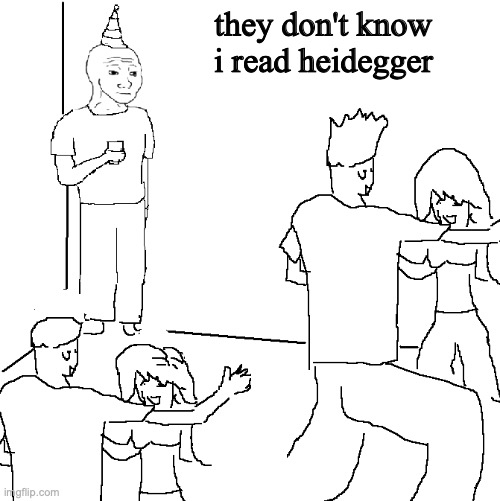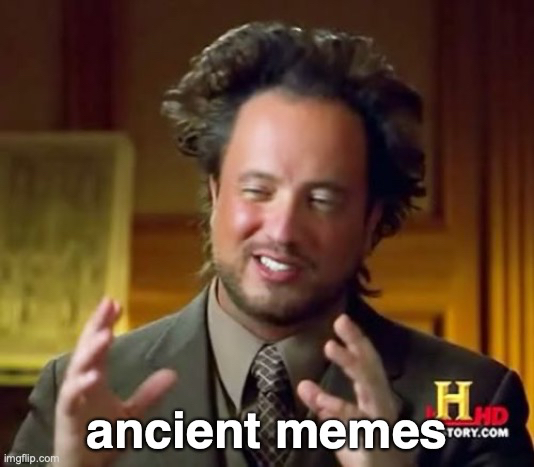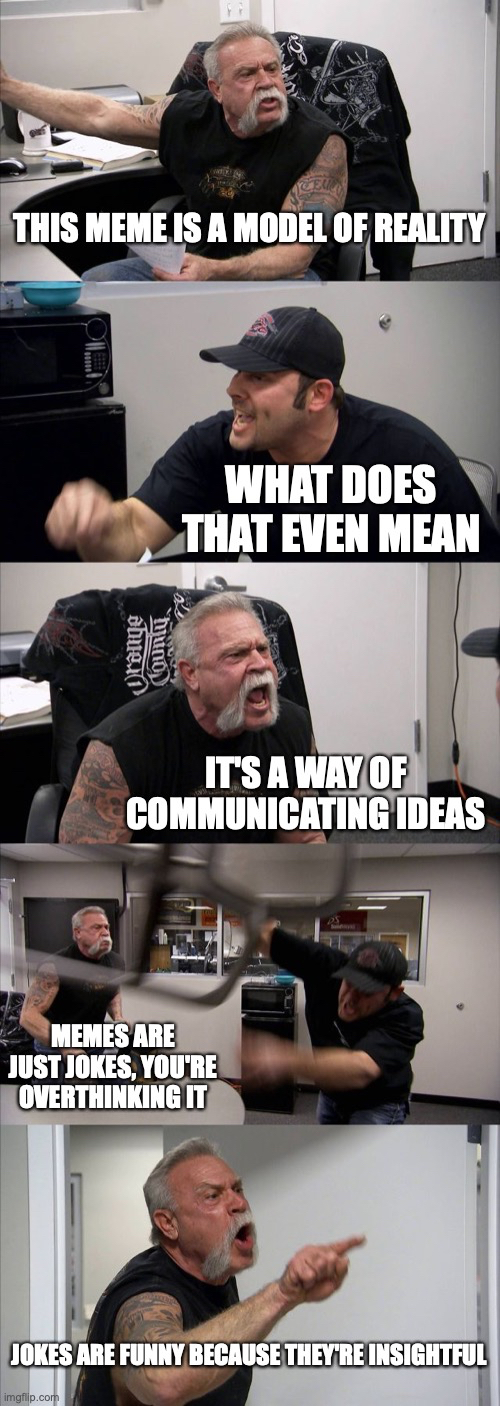
All economic behavior depends on belief. It’s obvious: Want investors to fund your idea? They have to believe in it (and you). Want customers to buy your product? They better believe it’s worth the cost. Everything rides on the ideas that inhabit our minds.
What’s less obvious is that there is an evolutionary process that governs the ways people adopt and abandon ideas. In much the same way as bodies can be seen as survival vehicles for genes, minds can be seen as survival vehicles for memes. Once you understand how this process works, you can understand much better why people behave the way they do—an incredibly valuable skill in a world that seems to be getting stranger by the day.
But first, what is a meme?
The word “meme” was originally coined by Richard Dawkins in his classic 1976 book The Selfish Gene. In it, Dawkins defined memes as “a unit of cultural transmission, or a unit of imitation.” Dawkins’ examples were “tunes, ideas, catch-phrases, clothes fashions, ways of making pots or of building arches.” Today, the list includes gifs, emojis, acronyms (iykyk), viral TikTok dances, business models (starting a substack, “Uber for x”, etc), blog post genres (the “thinkpiece”), and more.
The fundamental essence of memes isn’t that they’re funny or come from extremely online people. Memes are essentially just patterns we imitate to achieve some desired effect. For example, in fifth grade I learned to play guitar because I thought it would make me cool. In college I smoked clove cigarettes and conspicuously read Heidegger. Today I write blog posts about business strategy and wear a recreational continuous glucose monitor.
In each of these phases of my life, my behavior originated by seeing someone else get results by doing a thing, thinking to myself “hey that is a good idea”, and then copying it.
In this way, memes are basically models of reality, or theories of cause and effect: if you do X in this type of situation, then Y will happen. The nature of memes is to be mimicked... because they work.
When I see someone do something, and I see that they’re getting desirable results from it, a sort of economic transaction occurs: if the benefits of adopting the meme seem to outweigh the costs, then the meme becomes integrated into my framework of beliefs (memes) that determine my behavior. I become a carrier for the meme. Then I start expressing the meme, and when other people see me getting results they desire from it, then they become carriers, too. If people don’t see me expressing the meme or aren’t interested in the results I’m getting, I can’t spread the meme to them.
This is what we’re really talking about when we speak of being “inspired” by “role models” or “influencers”, or when we become “indoctrinated” / “enculturated.” We’re talking about mimetic transmission.
It may seem like a stretch, but I’m proposing that all behavior, everything we do beyond our most basic biological necessities, is governed by memes.
Remember, memes aren’t just internet jokes or fads; the culture that memes transmit is the sum of all our knowledge, beliefs, theories, technologies, and traditions—everything in our heads beyond the physical instincts programmed by our DNA. And even then, the actions we take to address our instinctual urges are 100% mediated by the memes in our head. Take hunger, for example. What else besides memetic mutation and natural selection could explain the nearly infinite variety of caloric delivery mechanisms humans have invented?
It may seem like a stretch to connect internet memes to the sum of all human culture and knowledge, but in essence all our ideas and beliefs share the same basic structure: if you do X in this type of situation, then Y will happen. Trigger, behavior, result. Cause, effect.
Internet memes fit into this framework perfectly. On one level, they’re about sharing a joke in a certain type of situation to demonstrate that you have a big brain and understand something fundamental about what’s going on, which boosts your social status. But on a deeper level, internet memes function as labels for specific patterns that happen in the world. When someone deploys a dank meme, they’re saying “this is what is going on here.”
For example, look at the memes I’m using in this post. The most recent one above is called Ancient Aliens, and it’s a screenshot of a guy on the history channel expressing an outlandish theory that ancient aliens were responsible for building the pyramids in Egypt. I’m using this meme to poke fun at myself and acknowledge “when people make big claims, then people often see them as nutty.” And I’m expressing this meme in this situation because I have another meme in my head that says, “if you acknowledge potential skepticism when making a big claim, then people will see you as more credible.” I’m showing that I see what’s going on here.
But memes can only go so far to establish credibility. Our prior memes provide the framework upon which we judge new memes, and we can only pick up new memes that fit within our network of old memes, kind of like how two molecules can only form a bond if their atomic shapes are compatible. This is why two people with two different sets of memes can draw totally different conclusions from watching the same person express the same meme.
Take the ancient aliens thing, for example. It might fit right in with one person’s prior memes like, “the government keeps secrets from us” and “the universe is teeming with life.” And it might completely conflict with another person’s memes like, “aliens don’t exist” and “TV shows get people to say outlandish things with no basis in science because it attracts attention.”
This explains why it’s so hard to get people to agree on some things, like politics, religion, and Q4 budget planning. If a new meme doesn’t fit into your prior framework of memes, there’s basically no mechanism to get you to adopt it. The only way is to go all the way down to the root of first principles, which people are rarely willing to do. We are somewhat rationally hesitant about adopting new ideas. If we went along with anything superior debaters “proved” to us, we would be highly manipulable and vulnerable.
Instead, when we’re outmaneuvered in a debate, we just yell louder.
But our resistance to foreign memes goes beyond instinctual conservatism. Sometimes we don’t even get the chance to argue against them, because we literally fail to perceive them when they are right in front of our face. This happens because our conscious experience of reality is mediated by our prior memes.
Not sure what I mean? Here’s an example. In The Structure of Scientific Revolutions—a great book about how scientists adopt and abandon and fight over memes—Thomas Kuhn describes some scientists who did an experiment meant to show just how difficult it is for people to process new observations that don’t fit within their existing paradigms/memes. Basically they flashed people a bunch of playing cards and asked them to name the cards they saw—except some of the cards weren’t real. For instance, they showed people a 6 of spades but the spade icon was colored red. Most people did not notice the anomaly, they just said “six of spades.”
Kuhn used this example to show how difficult scientific discovery is, but it applies to all of us. Have you ever been so annoyed at someone you literally can’t perceive all the little nice things they do? Or have you ever been so invested in trying to make your business strategy work that you fail to notice lots of little signs that a slight tweak to the plan might work 10x better? Our narratives/theories/memes have a way of monopolizing our focus if we’re not careful. This is one of the ways companies get disrupted.
Speaking of strategy: properly understood, memes are strategies. In my first ever post in Divinations, I said, “Every strategy is really just a theory: ‘We bet if we do x, then y will happen.’” When those strategies don’t seem that rewarding, few bother to copy it and it doesn’t become a popular meme. But when they pay off big, you can bet the copycats are coming.
I could go on forever about this topic, but this is probably enough for today :)
To recap:
- Memes are units of cultural imitation
- We absorb memes that seem to work and fit with our prior memes
- When we absorb a meme, it gets expressed in our behavior
- When we express a meme, other people see it and might copy it
- Memes evolve through mutation and natural selection just like genes do
- People resist memes that don’t fit into their existing network of memes
- If you could build a perfect database of all the memes in people’s heads, and had a good understanding of the mechanics by which memes spread, you could probably do something like psychohistory.
If you liked this and want more on the topic, smash the “amazing” button below.
Thank you!!
Find Out What
Comes Next in Tech.
Start your free trial.
New ideas to help you build the future—in your inbox, every day. Trusted by over 75,000 readers.
SubscribeAlready have an account? Sign in
What's included?
-
Unlimited access to our daily essays by Dan Shipper, Evan Armstrong, and a roster of the best tech writers on the internet
-
Full access to an archive of hundreds of in-depth articles
-
-
Priority access and subscriber-only discounts to courses, events, and more
-
Ad-free experience
-
Access to our Discord community






Comments
Don't have an account? Sign up!
Absolutely beautiful. Never memes were that old or this deep...until now. Thank you for this.